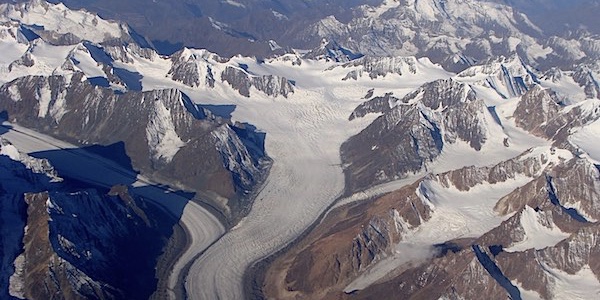LADAKH OVERLAND via MANALI
Tour - 19 days/ 4 days trekking
LADAKH OVERLAND via MANALI
Tour - 19 days/ 4 days trekking
About LADAKH & HIMACHAL PRADESH
Ladakh is a part of the Indian Himalayas It is located between the Kunlun mountain range in the north and the main Himalayas to the south. Although part of India now, and earlier of the princely state of Kashmir, Ladakh has been an independent kingdom for almost 900 years.
Ladakh is well-known for its starkly beautiful mountain scenery. As a result of its location in the rain shadow of the main Himalayan Range its climate is extremely dry, and due to the high altitude – most valleys are situated at 3300m or higher – winters can be extremely cold. Summers, however, are generally pleasant if not warm and sunny. Ladakh is inhabited by a mix of Indo-Aryan and Tibetan people. Especially the latter, with their colourful buddhist culture, have given the region the nickname of ‘Little Tibet.’
Ladakh in the narrower sense is the Indus Valley with adjacent areas. It is bordered by two mountain ranges: in the northeast by the Ladakh Range, in the southwest by the Zanskar Range. The area around the capital Leh, and further upstream towards Tibet, is referred to as Upper Ladakh. Lower Ladakh is the area further downstream to Kargil, where the Indus enters Pakistan.
The remoter areas of Zanskar, Nubra and Rupshu are now seen as regions of Ladakh. In the past, these areas were sometimes part of Ladakh, sometimes not. They can be visited from Leh by car or on foot. The latter would be your means of transport, if you are up to it. Because, while jeep trips in Ladakh are very rewarding indeed, trekking will give you an even in-depth experience of the land and the people, with the added bonus of a total renovation of body and soul.
Ladakh can be reached by air or overland. This tour takes you by train and car to Ladakh through the Himalayan state of Himachal Pradesh. Being situated on the southern flanks and partly straddling the Great Himalayan Range, Himachal Pradesh is heaven for mountain lovers. There are many tours and treks that we can organise her as well. So, if you’re not on a time budget, there is no need to rush to Ladakh.
Region
Ladakh
(India)
Best Time
July - Sept.
No. of Days
19 days,
4-day trek
Trip Character
Jeep tour with short trek
Sleeping Altitude
1800 - 4500 m.
Trek Character
Homestay
Level: 1
Price
INR XXX/ $ XXX
ABOUT THIS TOUR
On this very varied journey you travel to Ladakh overland via Manali, located at 1800m altitude in the green-forested Kullu Valley. Here you are surrounded by the southern foothills of the Himalayas, covered with dense forests and glaciers.
After a day in this small but lively town, the ‘serious’ part of the journey to Ladakh begins. First, you cross the Pir Panjal mountain range, a promontory of the Himalayas. Descending from the 3978 m high Rothang Pass you reach Lahaul, an area where Hinduism and Buddhism meet and partly go together. Here you will stay another two nights to get used to the altitude.
On the next two days, you cross the high plateau of Changtang to the Indus Valley in Ladakh. On these days, in addition to the religious transition, you will also experience a gradual, but very dramatic, transition from green and wooded to barren and desolate. This is what gives this trip a great added value compared to a plane ticket from Delhi to Leh, the capital of Ladakh.
Before we take you to Leh, you will explore the outskirts near the border with Tibet and Pakistan. You will spend three days in a pleasant lodge in the middle of a traditional village and from there you will visit the cobalt blue, high altitude lake Pangong Tso. Via the much sung Nubra Valley, an isolated valley wedged between India, Pakistan and Tibet, you reach Leh, the capital of Ladakh. In Leh you have two days to explore this pleasant town and make excursions on your own to the many beautiful monasteries in the Indus Valley.
After that, you will make a three-day trek through the Sham area, not far from Leh. Here you walk from village to village over easy mountain passes and through bright green oases that beautifully contract with the colorful but barren mountains around it. You sleep in homestays where you get a glimpse into the daily life of the Ladakhi’s. At the end of the trek you will be brought to Lamayuru, where one of the most picturesque monasteries of Ladakh is located.
You return to Leh via the also very beautiful Alchi Gompa (monastery) and fly back to Delhi the next day.YOUR custom-made TRIP
The tour described here, as well as the other ones on our website, are mainly meant as suggestions. We would be happy to offer you a travel proposal that fully meets your personal demands and expectations. That means that you choose where you want to go, what level of accommodation and type of transport you want and what activities you prefer.
Please let yourself be inspired by this and other trips on our website and then drop us a line (or call us) to explain your travel wishes. We will be happy to help you put together the perfect trip. You can reach us over e-mail, Messenger, Whatsapp or mobile phone.
EXTENSIONS & VARIATIONS
Apart from the tour as described here, you could consider the following add-ons and changes:
- Break up the first day with a visit to Shimla. Going to Shimla instead of Manali on day 1 reduces your travel time considerably. Besides, Shimla is a very pleasant hill station with a lot of old world charm as it was the summer capital of British India. We recommend two nights here.
- Explore the Shyok River further downstream in the direction of Pakistan. The road passes through magnificent gorges and while the vegetation gets more opulent as you are reaching lower altitudes the culture gradually changes from predominantly Buddhist to Muslim. You can travel up to the village of Turtuk where you can stay the night at a simple but decent tented camp.
- Spend one more day in Nubra on which you make a 5-hour walk to two small, hidden monasteries that rarely if ever see a foreigner coming.
- Do a more challenging trek instead of the Sham trek. For instance, the Chilling – Lamayuru trek. On this 4- or 5-day trek you sleep in trekkers tents while a walk-along cook prepares your meals. You walk longer distances, climb higher passes but the rewards are even better views, more authentic villages. See here.
- Spend a day rafting on the Indus. There are different grades available, so there is the easy but fun to do level as well. Professional oarsmen will be with you in any case. You will be picked up from your hotel and dropped off there again at the end of the day, a pic-nic lunch is included.
ITINERARY
-
.fa-info {color: #1146a9;}.fa-info:hover {color: 387dff;}Day 1: New Delhi - Chandigarh - Manali (4 h train, 8 h car)
Your journey starts with a 4-hour train ride from Delhi to Chandigarh. Here, our driver is waiting to take you on an long car drive through the forested mountains and orchards of Kullu Valley upto Manali, situated at 1800m. -
.fa-info {color: #1146a9;}.fa-info:hover {color: #387dff;}Day 2: In Manali
Today you can explore Manali and its surroundings on foot and by car, visit Hindu and Tibetan temples and walk in the forests. Altitude 1800m. <a href="#HLLA20" -
Day 3: Manali - Rothang Pas - Keylong (4 h)
Today’s destination is Keylong in Lahaul, which you reach by crossing the Pir Panjal Range via the 3978 m high Rothang Pass. In Keylong, at 3000m, you have two overnights to get used to the altitude. Today, you may get some mild symptoms of car sickness or altitude sickness (headaches, bad sleep). But remember it is all worth it, as you're traveling one of the most spectacular mountain roads in the world! Altitude 1800 → 3978 → 3000m. -
Day 4: In Keylong
Today you can visit Shahur Gompa, a nearby Buddhist monastery with beautiful views. Or the driver takes you to the 12th century Buddhist temple of Triloknath in the Chenab valley, and onwards to the intriguing wooden Hindu temple of Udaipur. Altitude 3000m. -
Day 5: Keylong - Shingo La - Purne (7 - 9 hours)
Today you really will get up-close with the Himalayas, as you’ll be crossing the actual Himalayan Range. This will happen at the 5090m high Shingo La pass. Descending from the pass, as you enter one of the high valleys off Zanskar, you’ll enter the “Tibetan realm.” Tiny villages of white-washed houses of sun-dried mud bricks sit amidst dark green oases of barley fields surrounded by starkly coloured mountains. Prayer flags wave from all the roofs and stupa’s (shortens) line the road. Overnight is at the hamlet of Purne, situated at the confluence of two large rivers. Altitude 3000 → 5090 → 3800m. -
Day 6: Tsokar/ Pongunagu - Shyok (7 hours)
Again a spectacular drive, crossing two high passes to the remote village of Shyok, situated on the river with the same name. Overnight at comfortable Shyok River Lodge. Altitude 4550 → 5300 → 3750 → 5360→ 3700m. -
Day 7: In Shyok
Today you'll be taken on village and nature walks near Shyok. You'll learn a lot about the Ladakh way of life and the Ladakhi flora and fauna. Altitude 3700m. -
Day 8: In Shyok, visit Pangong Tso
Famous Pangong Tso, located at 4400 m on the border with Tibet (China), is probably the largest high salt lake on earth. It is not only a spectacular lake, set amidst light-coloured mountains, but the route is beautiful too. Altitude 3700 → 4250 → 3700m. -
Day 9: Shyok - Nubra (4 h)
A thrilling jeep ride awaits you today, along the untamed Shyok river to Nubra. The road follows the beautiful valley, passing small hamlets of Ladakhi farms, crossing sand dunes and small side-rivers. Altitude 3700 → 3120m. -
Day 10: In Nubra
Today will be spent in Nubra. You can visit some beautiful Buddhist monasteries, ride Bactrian camels through the sand dunes of Hundar or hike to small, hidden monasteries. Altitude 3100 - 3200m. -
Day 11: Nubra - Leh (4 -5 h)
The road to Leh, capital of Ladakh, crosses the Khardung La (5450 m). This is supposed to be the highest motorable road in the world. The drive is spectacular and so are the views over the oasis of Leh during the descent. Altitude 3120 → 5450 → 3500m. -
Day 12 & 13: In Leh
Leh is a pleasant little city with many restaurants and shops, and opportunitirs for short walks. Highly recommended are excursions by taxi to some of the many nearby Buddhist monasteries. Altitude 3500m. -
Day 14: Leh - Likir; Trekking to Yangthang (2 h drive, 4 h walking)
After a transfer to Likir, and a look at the picturesque Likir Gompa, perched on a hillock, you'll start you 4-day trek. Today you cross a low pass to picturesque Yangthang. Altitude 3500 → 3600 → 3720 → 3630m. -
Day 15: Trekking Yangthang - Ridzong - Yangthang (4 h walking)
You walk up and down through a beautiful gorge to the hidden monastery of Ridzong. Part of the 'reformed' Gelugpa (Yellow Hat) Sect the monks here adhere to a very austere lifestyle. Altitude 3630 → 3400 → 3630m. -
Day 16: Trekking Yangthang - Hemis Shukpachan (3 - 4 h)
Today is a short walk. You'll pass the 3750m high Sermanchan La (3750m) to the beautiful village of Hemis Shukpachan. Altitude 3630 → 3875 → 3575m. -
Day 17: Trekking Hemis Shukpachan - Temisgang (4 - 5 h) & car to Lamayuru (2 h)
Crossing another pass, the colorful Meptek La (3750m) takes you to Ang, again a charming village with many apricot orchards. Continuing over a jeep track you'll reach Temisgang. The car will be waiting here to take you to Lamayuru Gompa, where you'll stay near the monastery. Altitude 3575 → 3825 → 3260 → 3500m. -
Day 18: Lamayuru - Alchi - Leh (4 -5 h)
Today you return to Leh. You'll follow the old caravan route from Kashmir to Ladakh, which descends from a small pass above Lamayuru Gompa in a series of spectacular hairpin bends. Further down the Indus you'll visit Alchi Gompa, Ladakh's oldest temple, before continuing to Leh. Altitude 3500 → 3000 → 3500m. -
Day 19: In Leh
Day to spend as you like. In case you want to do any excursions the management of the hotel will be most happy to assist. See day 3 & 4 for suggestions. Altitude 3500m. -
Day 20: Flight Leh - Delhi
Early morning transfer to the airport. On a clear day the flight offers breathtaking views of the colorful mountains of Zanskar and the glacier-capped peaks of the Great Himalayan Range.
HIGHLIGHTS OF THIS TOUR

MANALI
ROTHANG PASS & KEYLONG

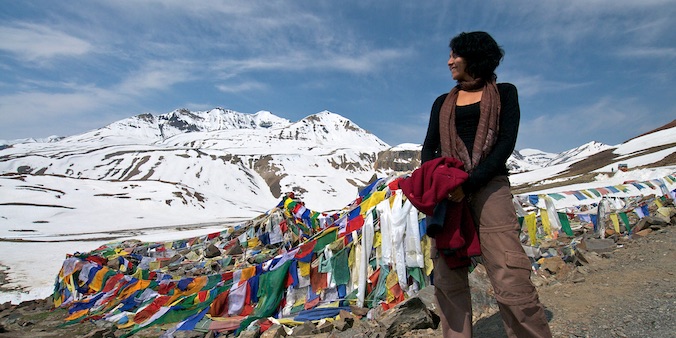
HIMALAYA CROSSING
SHYOK RIVER LODGE

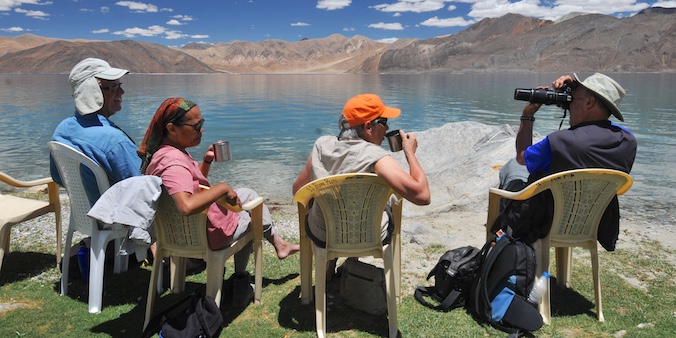
PANGONG LAKE
NUBRA VALLEY
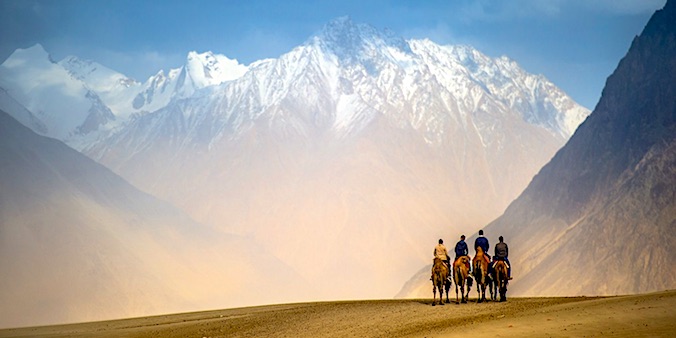
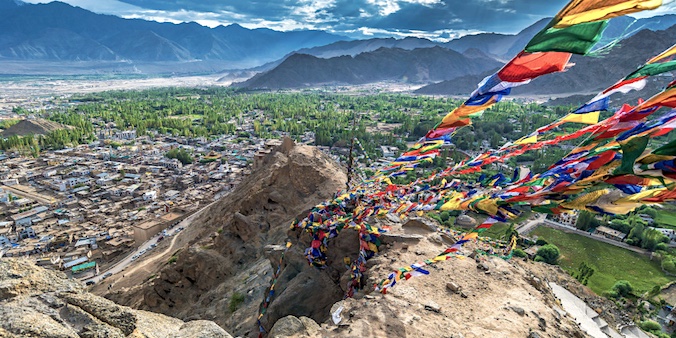
LEH
CARAVAN ROADS OF LADAKH
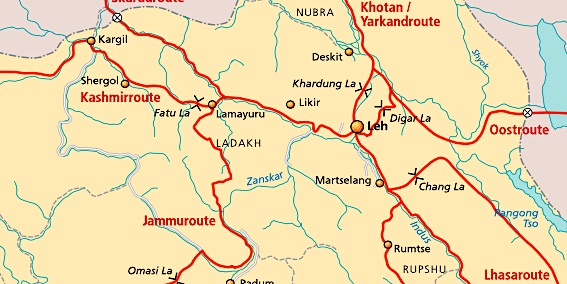

SHAM TREK
LOWER INDUS VALLEY (WEST)
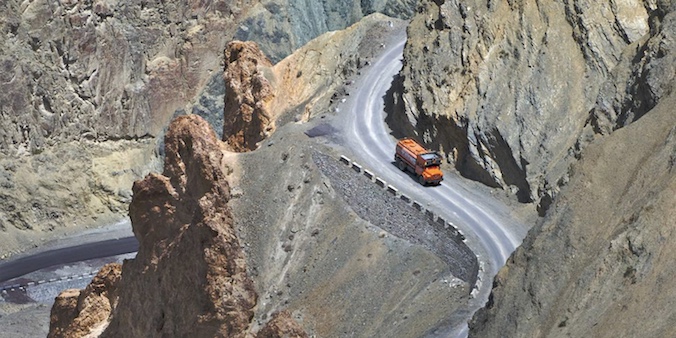

LAMAYURU & ALCHI GOMPA
Flight to Delhi
